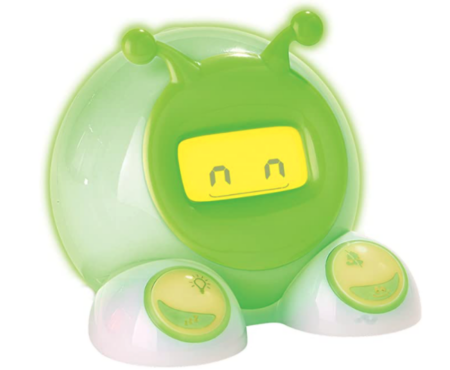Spring forward without losing sleep: 5 tricks to adjusting to Daylight Saving Time with kids
DST is around the corner, and sadly, there are no exemptions for the already-sleep-deprived.

annann_9/Twenty20
“Spring forward, lose sleep.” That’s how parents tend to think about the start of Daylight Saving Time, when the clocks spring forward one hour at midnight, and we all lose an hour of sleep. (Sadly, there are no exemptions for the already-sleep-deprived.)
With the start of this year’s Daylight Saving Time around the corner on Sunday, March 13, 2022, most of us are preparing to set our clocks one hour ahead as we “spring forward.” Thankfully, this means the days will start to feel longer with more sunlight, but it also means another shift in your child’s sleep schedule.
The good news? There are ways to minimize the effects of the time shift and help make the forward leap into spring a smooth transition for the entire family.
Try these 5 “spring forward” tips to help kids adjust to Daylight Saving Time without losing sleep.
1. Prepare by going to bed earlier the night before
Truthfully, the concept of shifting bedtimes can feel a bit like rocket science. So, to keep it simple I recommend going to sleep earlier the night before. That way, the household still wakes up feeling rested.
Some people recommend doing this for several nights before, moving bedtime earlier and earlier, but honestly I have seen this cause more confusion than benefit. If you focus on the night before, they still get the same amount of sleep as they normally would on the night the time change happens, since our bodies naturally will wake at our normal time.
Much like traveling to a different time zone, it is going to take some time for your internal sleep clocks to adjust regardless of how prepared you are. Going to bed earlier to avoid overtired little ones is a good idea in general.
2. Encourage light during the day and darkness for sleep at night
Our body’s internal sleep cycles (also called our circadian rhythms) are regulated by lightness and darkness, and heavily influenced by our environment. This is why many of us wake up when the sun rises and start to feel sleepy shortly after the sun sets (although many of us go to bed way past sunset).
You can help your child’s 24-hour sleep cycle auto-regulate by exposing them to light first thing in the morning and making sure that their room is dark during naps and for bedtime. If your child’s bedtime is on the earlier side, it may get harder to put them down as the days get longer, so blackout shades might be a good option in this case.
3. Keep routines consistent
As we enter a new season, schedules and activities can tend to feel a bit chaotic, and your children often experience the impacts of this the most. Even with the time shift, it is still important to stick closely to your current routine, only making minor changes if possible.
4. Try to be patient with your kids
As we all know, the effects of sleep deprivation impact the entire family. Children are just as confused about the time change as we are, and although our bodies will eventually adjust naturally, some have a harder time than others. If you notice meltdowns become a bit more frequent after the time change, try to remember that lack of sleep could be the culprit. I encourage you to set aside more quiet time and maybe even an extra nap while you all try to adjust to this new season.
5. Invest in an Ok-to-Wake! clock or another device that can help keep sleep on track
This is a great option for eager toddlers who are used to getting up and running into your room in the morning. Having a child-friendly alarm clock that turns green to indicate when it’s time to get up can make a big difference to a child trying to adjust.
The great thing is, if you already have an early morning riser, the time change will actually help to shift those early morning wakings to a more manageable time!
Your children are more resilient than you might, think so try not to worry too much about the impact daylight saving time will have. Our bodies know what to do, and sometimes the best thing is to just go with it and hope for the best! You’ve got this.
A version of this post originally appeared on Feb. 20, 2020. It has been updated.



